22 Jan Choosing the right 19 rack cabinet
Choosing 19 rack cabinet, but a few notes in advance …
Would you like to buy a server cabinet or network cabinet? Or just the accessories for an existing 19 “cabinet? For experienced network technicians who have to deal with 19” cabinets on a daily basis, it is certainly easy to choose the right cabinet or the correct accessories. This treatise is more aimed at those customers who rarely buy a server cabinet / network cabinet. We are trying to give you a little guide that you can consider when buying. You can also contact us directly, we will be happy to help you. Here is our contact.
Table of Contents
From the Server Cabinet Experts –
A little examination on network cabinets / server cabinets. With a description of important selection criteria when purchasing 19 ” rack cabinets1: 19″ network cabinet basics
2: A modification of the 19 “network cabinet: the 19” server cabinet
3: Small network cabinets for wall installation: 19 “wall cabinet
4: General function a network cabinet / server cabinet
5: Server cabinet in a polluted and / or humid environment
6: Server cabinet and high temperatures
7: Cabinet cooling
8: Server cabinet and security
9: A few tips to think about before installing a cabinet
1 – 19 ”network cabinet – the basics

19 ” profile / mounting rail in a server cabinet
Network Cabinets are standardized for the inclusion of 19-inch components. 19 “is equal to a width of 482.6 mm. Internationally the standard is known as IEC-Norm 60297, and in Germany as DIN 41494 and some other standards for UK.
A network cabinet is usually 600 or 800mm wide and 600 or 800mm deep. A network cabinet has front (and rear ) 19 “profile rails for accommodating 19” devices. The height of the devices to be installed is specified in so-called height units (HU), with one height unit being 44.45 mm. There are two mounting holes per HU with a distance of 31.75 mm Network cabinets are usually between a few height units up to 47 U high (or even higher as a special structure).
The most common height is 42 U, which corresponds to a cabinet height of approximately 2 m.
(Further terms for a network cabinet / server cabinet: data cabinet, 19 “distribution board, 19” floor-standing cabinet. 19 inch rack)
2 – 19″ Server rack Cabinet
A 19” server rack cabinet is – very similar to the network cabinet having 600 or 800mm width. However, the server cabinet is usually deeper than a network cabinet and it’s usually is 800 or 1000mm depth (sometimes even deeper). This greater depth is necessary due to the depth of the server (or other applications) to be installed. A server cabinet is usually more stable and can therefore be subjected to higher loads.
The “server cabinet” is often equipped with a 100mm base and an integrated anti-tip device. This is important so that the cabinet (e.g. when the servers are pulled out) cannot tip forward. An optional or additional protection is anchoring the server cabinet to the floor with screws. Server cabinets are often equipped with perforated doors and / or side walls to improve the air flow in the housing – and thus the heat dissipation.
Worth mentioning: It must always be taken into account that the depth of a rack (e.g. 1000mm) cannot be enterly equipped with devices. On the one hand, the 19-inch upright rails usually start approx. 3 – 5 cm away from the door edge (front and rear), and on the other hand, a little space is always required for the cabling in front of and especially behind the server. In our case, the maximum server housing depth would be around 850 to 900mm. Upcom Telekomunikasyon cabinets have adjustable 19-inch upright rails for easy cabling.
3 – 19 ” Wall Mount Rack Cabinet

Double section wall cabinet
Wall mount rack cabinets are usually 4U to 20U height, 400mm to 600mm deep. Are required for smaller distributions. Please note payloads! There are wall housings up to 30kg in weight, but also up to, for example, 100kg load capacity ( Like W-Line Wall Mount Rack Cabinet or 40kg like SOHO wall mount cabinet).
4 – General function of a server rack cabinet
Choosing 19 rack cabinet
The network cabinet or server cabinet – the functional boundaries are fluid here – forms the node in the structured building cabling. Such a data cabinet is used to hold and protect passive and active network components such as fiber optic splice boxes, patch fields, bridges, routers, switches and hubs, computers, servers, monitors, etc.
Network cabinets are available in different equipment and functional variants.
5 – 19 ” rack cabinet in an unclean and dusty environment
Choosing 19 rack cabinet
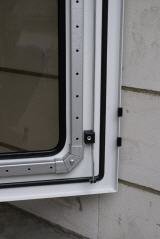
Foam seal may be required for a 19 “cabinet
A special type of server rack cabinet is a rack cabinet that has to operate in a dusty and polluted and humid environment. In such an environment, a standard server rack cabinet (with a low level of integrity, e.g. IP20 or IP41 (in the sense of dust and water tightness according to DIN)) would not be able to protect the installed devices from dirt and moisture for very long time. Definetely A system failure would very soon and inevitably will occur. Such IP-weak cabinets are only intended for clean and dry rooms (offices, server rooms).
Only a cabinet with high IP (and good cooling) guarantees long-term functioning of the system in a dirty and / or humid environment!
Choosing 19 rack cabinet
6: Server rack cabinet and high heat/temperatures

19 “slide-in fan
Another problem that is often underestimated is a server rack cabinet in which high temperatures can arise (due to external influences and the built-in active components). A device-compatible temperature in the cabinet is approx. 25 ° to 30 ° C. If it becomes warmer in the cabinet, you should think about the heat dissipation.
Hotspots are particular problem areas in the cabinet itself. Points in a closet where it gets particularly hot. In the cabinet itself, the average temperature may be OK, but the critical temperature is exceeded in individual cabinet areas (e.g. above a server).
There are various ways of reducing the temperature in the cabinet.
7 – Cabinet cooling

Server rack cabinet 42U with 2KW air conditioning
- The simplest option is to install a air conditioned server rack cabinet. This can be retrofitted without great effort. The slide-in fan has the task of circulating the air in a cabinet and releasing the temperature through the “cabinet outer skin”. Important: The slide-in fan must be installed so that air can circulate in the cabinet. It must not be built in from above or below (this would lead to a loss of performance or damage to the fan). The basis for this functionality: The air outside must be cooler than the circulated air in the cabinet, because this is the only way to dissipate heat. If the control takes place via a thermostat – which switches on the fans at a certain temperature – it should be noted that the temperature should be measured at the hottest point in the cabinet.
- A second easy way to lower the cabinet temperature is to install a roof fan . The task of the roof ventilator is to suck in the cold air from the outside (usually via the cabinet floor / cabinet plinth), guide it through the cabinet and blow it out over the roof. The basis for this functionality: The air drawn in from the outside must be cooler than the temperature in the cabinet. The greater the temperature difference, the more effective the cooling.
- In the case of cabinets with high tightness and the use of fans, care must be taken that the “filter fan” filters used (Technology from industry) also have a high level of tightness (ideally at least IP 54). Important: If there is only one opening on the cabinet that does not meet the IP requirements (be it a fan that is “not tight” or a cable duct that has not been properly sealed), the cabinet loses its specified IP.
- A classic cabinet air conditioner should generally only be installed on cabinets with at least IP54 (= high tightness). An air conditioner is like a refrigerator. The outside temperature can be higher than the required internal cabinet temperature (but not higher than approx. 50-55 ° C, as the coolant used can then no longer cool the air down). If the cooled server cabinet were not particularly tight, condensation would arise in the cabinet if the difference between the outside and inside temperature was too great. Condensation in the cabinet would mean that the built-in devices would fail very quickly. The cooling capacity of a cooling device can be up to 10,000 watts. Regardless of the cabinet manufacturer, air conditioning units can be retrofitted to server cabinets with at least IP54.
- The most effective and powerful type of cooling is cooling with air / water heat exchangers. The greatest advantages: Heat is dissipated directly where it is generated, evenly distributed air flow in the rack (no hot spots).
- If rows of cabinets are built up, intelligent cold aisle cooling can be used effectively and efficiently cooled (keyword data center cooling).
- A few words about the calculation of the cooling capacity: The cooling device should be designed / calculated in such a way that there is still enough reserve in the warm season (i.e. in the case of heat peaks in the room) and for any additional devices in the server cabinet in the future.
- Important: fans can never lower the ambient temperature below room temperature.In other words: it is usually a little warmer in the closet than in the room . Cooling devices can cool below room temperature. But: where there is cooling, there is also heat . This heat must be taken into account when planning the server cabinet and the premises.
8 – 19 “server rack cabinet and security
Choosing 19 rack cabinet
A network rack cabinet is always used to protect the built-in components from unauthorized access. A server cabinet / network cabinet should always be locked (via key and various locking systems depending on authorization). A cabinet can also be equipped with a cabinet monitoring system (control of vandalism, moisture, fire, vibrations, access, etc.). Such systems can be controlled and monitored via the company network, the Internet or even the mobile phone.
A special form of protection is an Electromagnetic compatibility (EMC). An EMC cabinet is an electromagnetically sealed cabinet similar to a Faradey cage. Due to this protection, this cabinet cannot be “bugged” because it does not emit any electromagnetic radiation to the outside (the protection applies both from the inside to the outside and vice versa). An EMC cabinet is important, for example, in highly sensitive IT areas (= information espionage).
Another aspect is the server rack deletion . This takes place via a 1U unit and extinguishing gas. Usually a 1U perforation unit is sufficient for a little more than a server cabinet in 42U. It is usually extinguished with FM200 or Novec extinguishing gas. The gas is electrically neutral the devices are not damaged by the gas.
9 – Tips on choosing 19 rack cabinet
- Choose a sufficient size of the cabinet. If there is enough space, always choose a larger cupboard. The standard size in the network cabinet area is 800mmx42HEx800mm (WxHxD). In the case of the server cabinets 600mmx42HEx1000mm (since there is usually less wiring “on the side”).
- Ensure “good temperature” in the closet (ideally 25 ° to 30 ° C) – Is it necessary to use fans / heat exchangers / air conditioning units?Choose the right solution. Even “expensive” cooling device technology on the cabinet is usually cheaper than the failure of devices (consequence: hardware defects, loss of work, reinstallation, etc.).
- Cabinet should at least be lockable (with a key system)!
- Should several cabinets be placed in a row?Side walls savings potential – fewer are required.
- Are component shelves adequately dimensioned? (regarding depth and load capacity)?
- Other accessories; take into account (connection strips, lighting, swing frames, etc.).
- Equipotential bonding rail should be integrated in the cabinet.
- Take proper cable management into account (using cable clamp rails and cable clamps). Simplifies work on the cabinet, especially later (e.g. when retrofitting the applications). A clean structure is a good “calling card”.
- It is essential to install the UPS in the cabinet or connect it to a UPS system to avoid system failures or to ensure a clean shutdown.
- Should there be a gas extinguisher in the server cabinet give or not? Optimally, an erasing unit should not be higher than 1U high.
- Does it have to be a tightly sealed cabinet ?High tightness is associated with a higher price. Not necessary in a clean environment (offices, server rooms, etc.). If a cabinet system is to be expanded at a later date, a branded product should be purchased. In the cabinet sector, the life cycles of a series of cabinets from a brand manufacturer are very long-term. You may not be able to buy a non-name cabinet and its accessories in a year or two.
- There are high-end cabinets that have their justification (special design, wide range of accessories, high tightness, etc.). However, in most cases a solid cabinet with a good price / performance ratio is sufficient. Conversely, one should not only look at the price, since the cheapest solutions can often have a negative effect on the quality (weak construction, inaccuracies of fit, etc.). A problem with “no-name” cabinets: If you want to upgrade some time later (e.g. with fan units) or add a second cabinet, you can no longer find the cabinet type on the market.
- Choosing 19 rack cabinet : several standards like 19″ are the same in several European countries such as Austria, Italy, Belgium, Latvia, Bulgaria, Lithuania, Croatia, Luxembourg, Cyprus, Malta, Czechia, Netherlands, Denmark, Poland, Estonia, Portugal, Finland, Romania, France, Slovakia, Germany, Slovenia, Greece, Spain, Hungary, Sweden, Ireland..
Advancements in Fiber Optic Technology: Improving Bandwidth and Transmission Rates
Fiber optic technology has revolutionized the way we communicate, providing faster and more reliable data transmission over long distances. The use of fiber optic cables has become increasingly popula...
No comment 0 LikesOptical Fiber
What is optical fiber? We are used to the concept of moving knowledge in numerous ways. A wire cable transports the sounds from our speech into a socket on the wall and is borne by another cabl...
No comment 8 LikesFTTH installation Technologies
FTTH installation technologies Table of Contents Innovative approach to FTTH installation Technologies…1 Infrastructure Sharing…2 Duct sharing in France…2.1 Sewer pipes…2.2 Cle...
No comment 1 LikeWhat is MPO Cable
What is MPO Cable? Executive summary Push On (MPO) Multi-fiber Connectors – Fiber connectors consisting of several optical fibers are multi-fiber push on connectors, or MPOs for short. While des...
No comment 1 LikeIP55 Outdoor Cabinet
We found out that there is no enough information about 19” IP55 Outdoor Cabinet and thus we will investigate it. If you are reading this article, then you are probably planning to make a procurement s...
No comment 2 LikesWhat is Fiber Optic Cable
What is Fiber Optic Cable? A fiber optic cable, also known as an optical fiber cable, is an assembly similar to an electrical cable, but containing one or more optical fibers that are used to c...
No comment 2 Likes19″ Rack Cabinet
What is a 19” Free Standing Rack Cabinet? 19” free standing rack cabinets provide a robust, cost-effective enclosure solution. PDU mounting or connectivity on both the front and rear of the cabinet. T...
No comment 0 LikesHow Much Does Fiber Optic Cabling Installation Cost?
On average, fiber optic cable installation costs $1 to $6 per 30cm depending on the fiber count. It’s very difficult to estimate an exact price for an entire building to be wired, however an exa...
No comment 4 LikesConstruction Products Regulation (CPR) for Cables
CPR for cables (Construction Products Regulation) for cables became a legal requirement in July 2017. CPR for fiber optic cables is having an intended use for permanent installation in buildings and c...
No comment 0 Likes5 Fan Facts About the Fiber Optic Cables
Fiber optic cables are a type of cable that use glass or plastic fibers to transmit data. Here are some interesting facts about fiber optic cables: Speed: Fiber optic cables are capable of transmittin...
No comment 4 Likes




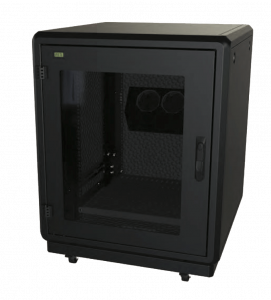

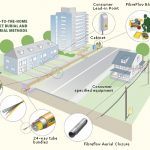

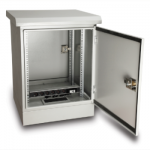

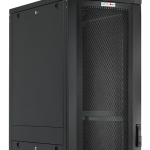
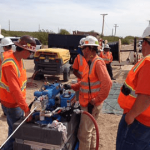

Sorry, the comment form is closed at this time.